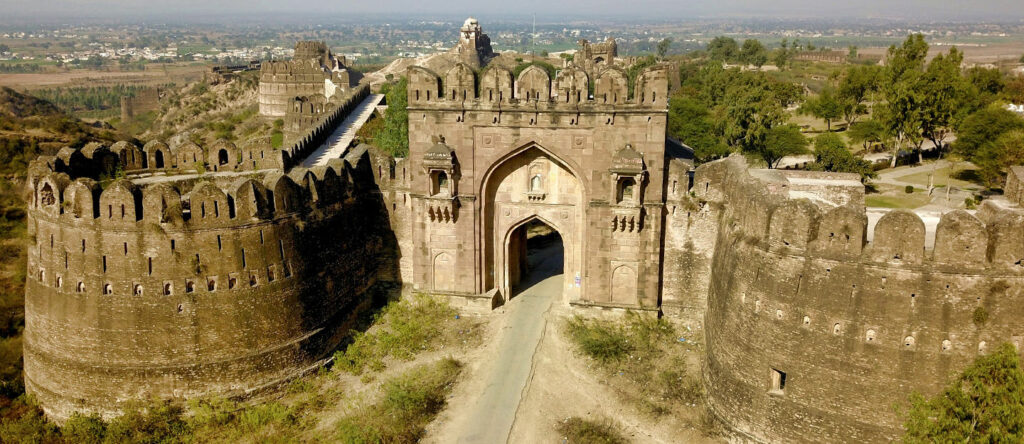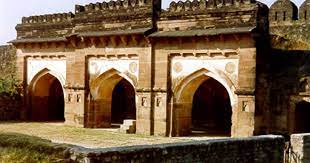Rohtas Fort in Jhelum is a historic place that is visited by a lot of tourists every year. It was considered the largest South Asia military base in the times of Sher Shah Suri. Rohtas Fort was built by Afghan monarch Sher Shah Suri, who blocked Mughal emperor Humayun.
History
Rohtas Fort’s history started with its construction in 1541. The Todar Mal Khatri, who was the revenue minister of Sher Shah Suri, provided all the directions and guidelines. It remains under construction for almost seven years (1541 to 1548).
Its name was put on the conquest of a Sher Shah Suri. He was a Hindu prince having a stronghold at Rostasgar in Shahabad district in 1539.
Sher Shah Suri died in 1545, and it caused him to rapidly crumble his empire. After ten years, in the ties of Tatar Khan Khasi, Humayun ascended to the throne. After years, in 1980, Mughal Akbar, who was Humayun’s son, erected the beautiful fort in Attock.
From the 16th to the 19th century, Qila Rohtas was the strongest military post. In 1825, it was also used for administrative purposes by the Ranjit Singh. But whole site and image of Rohtas were harmed due to unlawful encroachments.
Location
Rohtas Fort is located near Jhelum in Punjab, Pakistan. It comes on the old GT road connecting the plains of Punjab and the Afghan mountainous region. It is under 4Km circumference.

Structure
Rohtas Fort is famous due to its distinctive structure. Its tall and strong walls follow the truck’s art and culture and Mughal and Afghan features. Its main structures are Rani Mahal and Haveli Singh, step walls, royal mosque, and ramparts.
Also, Rohtas Fort gates belong to the main structures that are explained below.
Mahar un-Nisa Maqraba
Mahar un-Nisa Maqraba is on outer side of Langar Khani gate. The tomb food minister named Qadir Bakhsh’s daughter of Mahar un-Nisa. When she died, she was buried here and moved to Sasaram.
Rani Mahal
Rani Mahal is an ancient remaining and is a story structure. It is located near the Haveli Man Singh.
Rohtas Fort Gates
Rohtas Fort gates are twelve. Each of the gates is built of ashlar stones. Every gate is explained below sections.
Sohail
Sohail gate is the main entrance gate to the Rohtas Fort featuring the masonry work of the Sur Empire. It is named after the local saint “Sohail Bukhari, ” buried in the southwestern gate. The outer side of the gate has seven battlements. Rohtas Fort Sohail gate measures an area Width: of 13.3m, Depth: of 8.23m.
Shah Chandwali
It is a double gate named for the saint “Shah Chandwali,” whose shrine is near. This gate links citadel to the main gate. Its measures are as follows. Height: 21.34m, Width: 20.73m, Depth: 15m
Kabuli
Kabul is a buildup in two stages and is now for visitors’ guides to provide general directions. It opens towards Kabul, that’s why it is named Kabul. Also, a museum is set up here b the Himalayan Wildlife Foundation.
Shishi
Shishi is another beautiful gate of Rohtas Fort whose outer arch is decorated with delicious glazed blue tiles.
Langer Khani
It is another double gate of Rohtas Fort. Langar Khan was named because its outer arch opens towards the Langar Khana. It is 15.25 meters in height and 3.5 meters wide.
Talaqi
Its name is derived from “Talaq.” From the research, it is known that when prince “Sabir Suri” came, he entered the Qila from this gate and, after some time, got a severe attack of fever that was fatal for him. Legends said it was a bad omen. That’s why it was named “Talaqi.”
Kashmiri
Kashmiri Gate is also known as Mori gate
Khwas Khani
Khwas Khani is a double gate named after one of the Sher Shah Suri’s great and favorite generals, Khawas Khan Marwat. In the past, from the old GT roadside, it was the main gate for the entrance to the Rohtas Fort.
There is a defensive wall around the gate. It has two passes named inner and outer gates that mirror each other. Unlike other gates, it has five battlements having loopholes and machicolations. The outer gate is 12.8 wide and 8 meters in Depth. It was built for the chief and his family.
Gatalu
Gatalu is another single gate of 9.15-meter height and 6.1 meters in Depth. This gate is named Patan Gatiali or Gatiyalian village as it is in front of the gate. This point is important due to Kashmir Valley as visitors cross the Jhelum river.
Tulla Mori
Tulla Mori is the small gate for the entrance of visitors. It is located on the eastern side of the Rohtas Fort. It has an almost 2-meter-wide entrance.
Pippli
Pippli is another small entrance gate of 1.13 meters in Width. It is similar to the Tulla Mori gate.
Sar
This is a small entrance gate that was made for the locals. A dilapidated pond is in Front of the gate; therefore, it is called the Sar gate “water pond.”
There is a jungle with the outer boundary (main wall of the fort). Also, a bastion is there near the gate.



Significance of Rohtas Qila and Nearby historical places
Rohtas Fort has a lot of significance due to its history. Also, Mehar un-Nisa Maqbara contributed to its magnificence. Also, UNESCO 1997 designated it a world-historic heritage site.
It belongs to the few citadel structures that are available nowadays. Also, it provides a solely available piece of Hindu architecture within the fort and is named of Akbar’s best favorite generals. The royal mosque is located near the Rohtas Fort.

Conclusion
The above article explains all the information about Rohtas Fort. It is an ancient remaining from Hinduism and is a historic place for the Pakistanis to observe all its features and structure.


